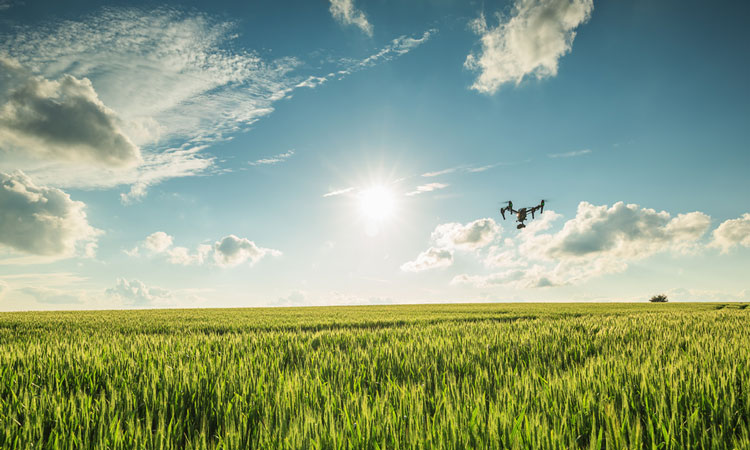Drone industry to welcome world’s first-ever drone standards
Posted: 23 November 2018 | International Airport Review | No comments yet
The first-ever worldwide standards for the drone industry are being released by the International Standards Organisation (ISO).


The new, long awaited standards have been developed after several years of global collaboration between standards institutions from across the world and are expected to trigger rapid acceleration of growth within the drone industry as organisations throughout the world are galvanised to adopt drone technology against a new background of reassurance on safety and security. The new standards will play an essential role in guiding how drones are used safely and effectively in a framework of regulatory compliance.
The ISO Draft International Standards for Drone Operations were formally released on the 21 November 2018 for public consultation, with drone professionals, academics, businesses and the general public being invited to submit comments by 21 January 2019 with final adoption of these standards expected in the U.S., UK and worldwide in 2019.
The announcement, by ISO, is the first important step in the standardisation of the global drone industry, encompassing applications for all environments – Surface, Underwater, Air and Space. The first drone standards are particularly significant for the general public and Government in that they address Operational Requirements of the more recognised and prevalent aerial drones, including protocols on safety, security and overall ‘etiquette’ for the use of drones, which will shape regulation and legislation going forward. They are the first in a four-part series for aerial drones, with the next three addressing General Specifications, Manufacturing Quality and Unmanned Traffic Management (UTM).
Air safety
A prime characteristic of the ISO Standards announced, is their focus on air safety, which is at the forefront of public attention in connection with airports and other sensitive locations. The new standards act as a new ‘etiquette’ for drones which promote and reinforce compliance regarding no-fly zones, local regulation, flight log protocols, maintenance, training and flight planning documentation.
Social responsibility is also at the heart of the standards, strengthening the responsible use of a technology that aims to improve and not obstruct everyday life. The effectiveness of the Standards in improving air safety will be further strengthened by the rapid development of geo-fencing and of counter-drone technology, providing front-line protection against ‘rogue’ drone use.
Privacy and data protection
The standards are also set to address public concerns surrounding privacy and data protection, demanding that operators must have appropriate systems to handle data alongside communications and control planning when flying.
The hardware and software of all related operating equipment must also be kept up to date. Significantly, the fail-safe of human intervention is required for all drone flights, including autonomous operations, ensuring that drone operators are accountable.
An exciting future for drones
Empowered by the standards, drones are set to provide the key to some of the most pressing economic, transport, security, environmental and productivity challenges faced by governments and industry throughout the world, reducing road traffic, easing congestion, saving lives through a reduction in accidents and reducing pollution in our cities.
As well as speeding up the delivery of large-scale infrastructure projects, drones are expected to reduce the need for some major transport projects altogether.
New exciting applications for drones are being developed daily. In particular, revolutionary approaches are emerging for freight and passenger transportation, with drones providing a cost-effective and environmentally responsible alternative to traditional methods, relieving the burden on our already stretched road traffic system.
Further applications in the agricultural, maritime, construction and energy sectors, among others, are already transforming businesses, with all industries and business sectors set to benefit from the standards-led adoption of drone technology.
The impact on UK PLC
Excitement surrounding the growth potential of the drone industry worldwide has been fermented through attempts to forecast its economic impact. For instance, PWC recently predicted that the UK aerial drone industry will contribute £42 billion and 628,000 jobs to the UK economy by 2030, while Goldman Sachs estimate that drones worldwide are evolving into a $100 billion market by 2020.
These predictions only address aerial drones, however, and it is therefore clear that the economic benefits offered by drone technology are vast, and set to grow further, particularly when Surface, Underwater, Air and Space applications are taken into account in their entirety.
Commenting on the announcement, Robert Garbett, Convenor of the ISO Working Group responsible for global drone operational standards, Chairman of the BSI Committee for UK Drone Standards and Founder of Drone Major Group, the world’s first global drone consultancy, said: “I am delighted that we have now reached the point where the first-ever Standards for the global drone industry are ready for public consultation after three years of hard work and international cooperation between ISO, BSI and Standard’s bodies across the world, with final adoption expected in 2019. These Standards will undoubtedly lead to a new confidence in safety, security and compliance within this dynamic industry, resulting in a massive expansion in the availability and use of drone technology in the years to come.
“Drones represent a global phenomenon and an unprecedented economic opportunity for any country which embraces the technology. It’s very encouraging that the UK Government is a world leader in recognising the importance of this vital business sector. Informed by the first drone standards, it is expected that the forthcoming UK Drone Bill, due in early 2019, will create a regulatory framework that allows the industry to flourish in an environment that is both safe and responsible. My conversations with drone buyers, manufacturers, users and the wider public indicate that these Standards are warmly and enthusiastically welcomed by all. I would encourage all those with an interest in drones to engage with the consultation process so that no stone has been left unturned in our quest for the creation and adoption of best-practice drone standards.”
Stay Connected with International Airport Review — Subscribe for Free!
Get exclusive access to the latest airport and aviation industry insights from International Airport Review — tailored to your interests.
✅ Expert-Led Webinars – Gain insights from global aviation leaders
✅ Weekly News & Reports – Airport innovation, thought leadership, and industry trends
✅ Exclusive Industry Insights – Discover cutting-edge technologies shaping the future of air travel
✅ International Airport Summit – Join our flagship event to network with industry leaders and explore the latest advancements
Choose the updates that matter most to you.
Sign up now to stay informed, inspired, and connected — all for free!
Thank you for being part of our aviation community. Let’s keep shaping the future of airports together!
Related topics
Aeronautical revenue, Air traffic control/management (ATC/ATM), Drones, Recruitment and training, Regulation and Legislation

















